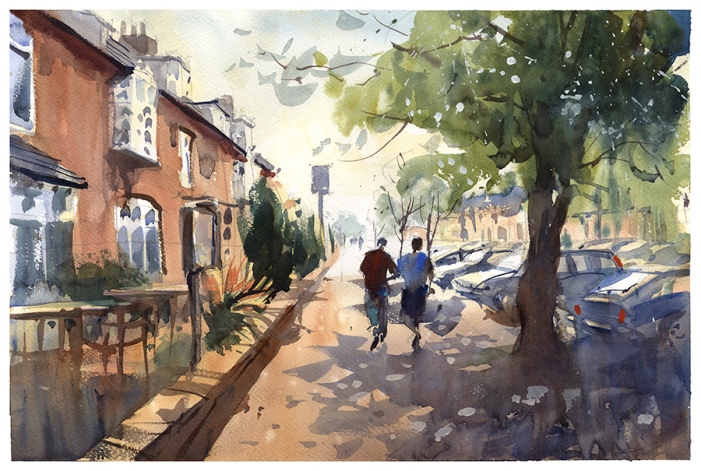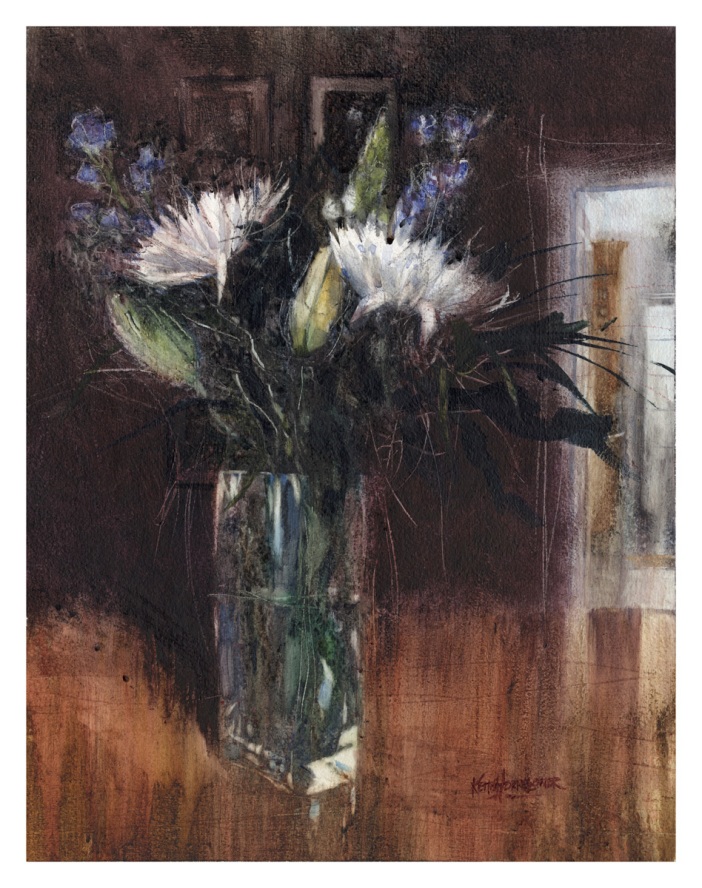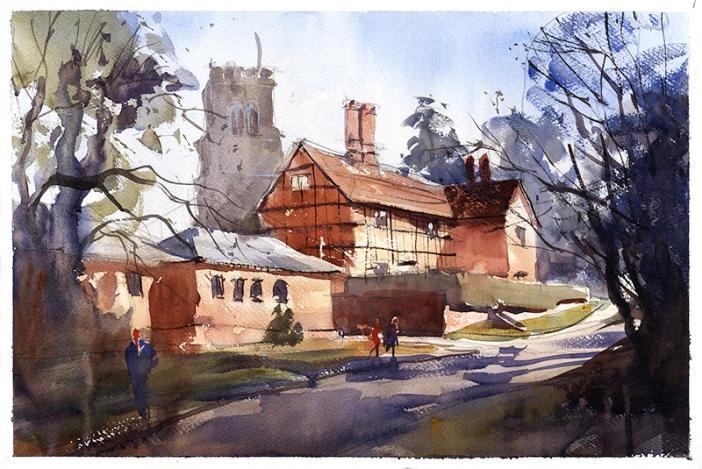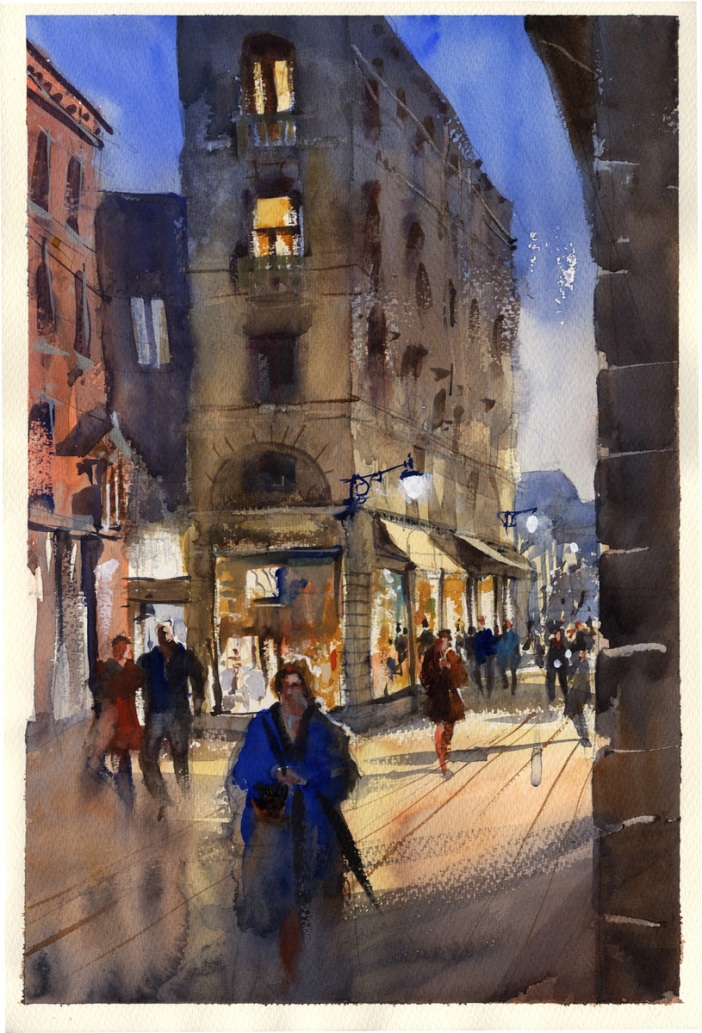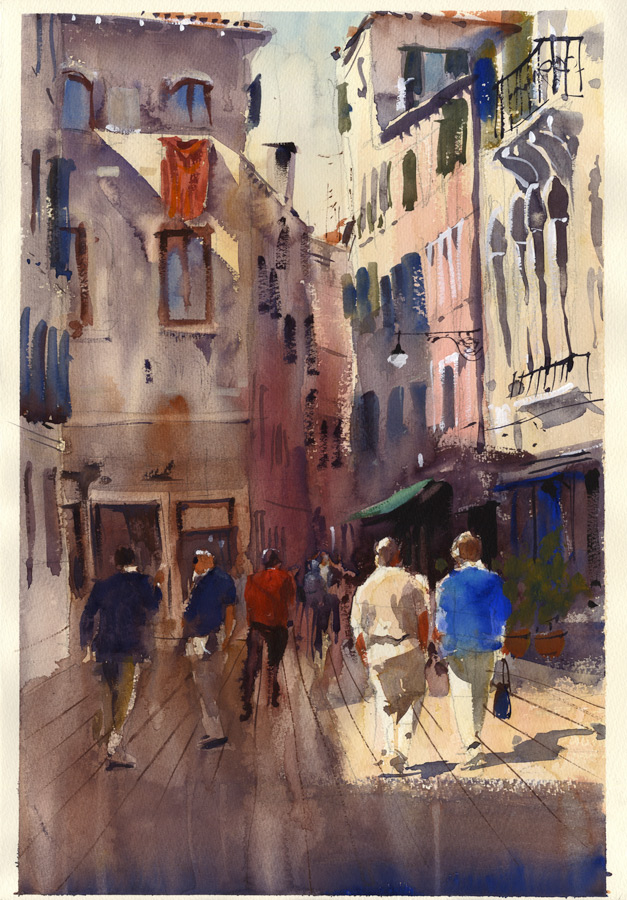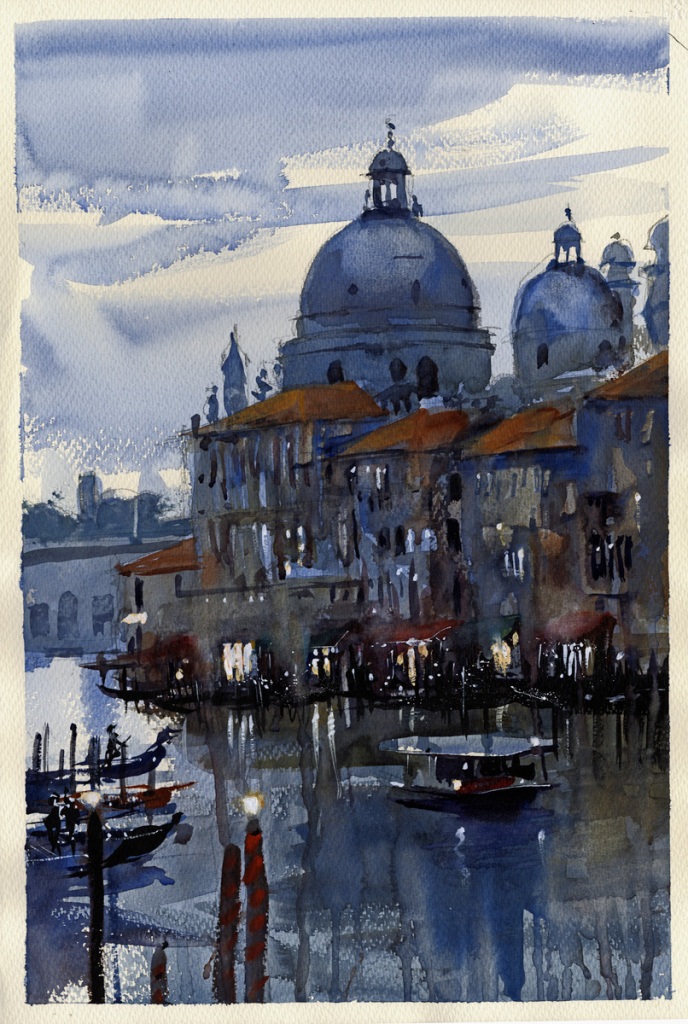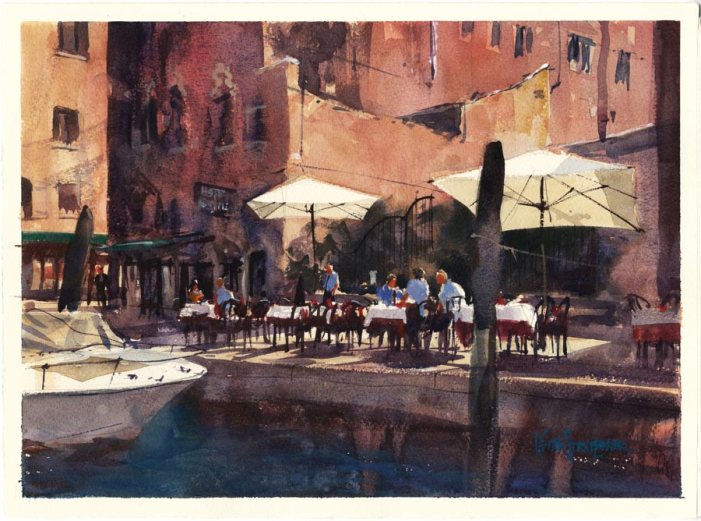I’m not one for rules in painting – the most exciting things happen when they are broken – but there are a few things to be aware of when composing a picture. You don’t have to apply every rule to every painting, but knowing the rules means that when you break them you are doing so consciously. If you look at the examples below, they each illustrate one of the principles of composition and, in all likelihood, break most of the others.
A famous Chinese painter was asked by the Emperor to paint a decorative screen for him, the brief was a flock of geese. The artist painted the background landscape – and one goose, disappearing off the screen stage right. The flock was implied by the single goose. The Emperor was delighted, fortunately for the artist. He broke the rules and won – my kind of guy.
So here they are:
No.1 – The Rule of Thirds. By putting the focal point at one of the third points gives a nicely balanced asymmetrical picture. There are a myriad of classic paintings which don’t appear to have a focal point at all, so don’t get hung up on it!
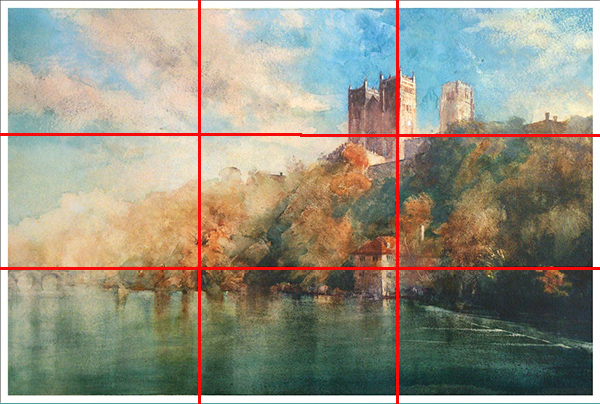
No.2 – The Golden Mean. There are many learned texts which extol the virtues of the magic “Golden Mean”, a rectangle with the proportions of approx. 1:1.6. They illustrate this by superimposing these rectangles, seemingly at random, all over classical paintings (see below). I take it with a pinch of salt; there is even a Golden Triangle and Spiral!
I would ignore this one; in fact I do ignore it…
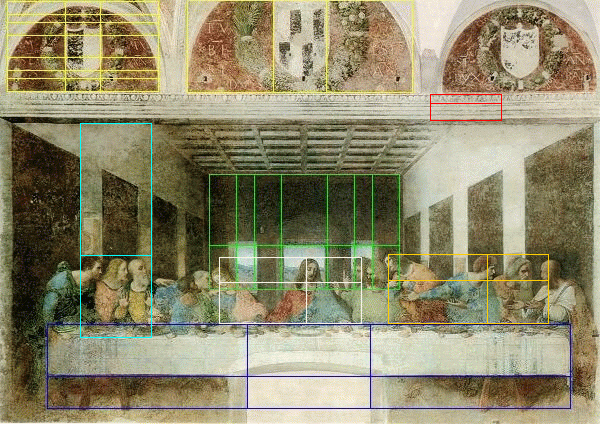
No.3 – Think about the orientation of the paper, landscape or portrait. Landscapes don’t have to be in landscape and portraits in portrait. Gustav Klimt went through a phase of painting in square format, very successfully.
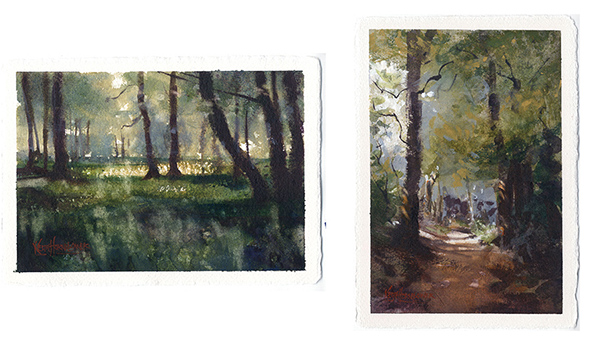
No.4 – Simplify! Think about what the painting is all about – the reason you’re painting it in the first place. The chances are that there’s a lot of surrounding clutter which would distract the viewer; get rid of it, or at least play it down. In the same vein, look for strong silhouettes. Often, this is the boundary between sky and earth and painting against the light enhances the effect beautifully. It also has the added advantage of unnecessary detail being lost in the shadows.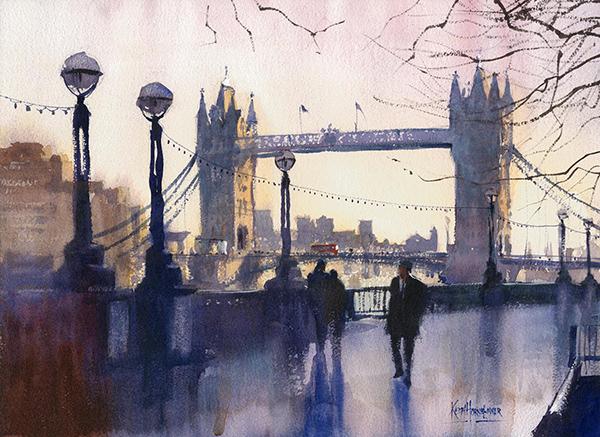
No.5 – Leading Lines. These are lines which draw the eye into and around the picture, for instance kerb lines, fences or an avenue of trees.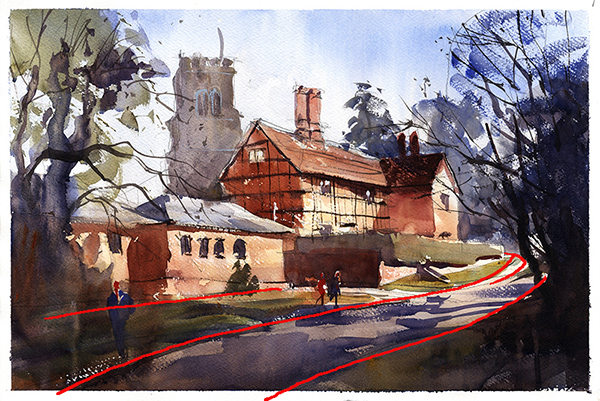
No.6 – Diagonals. following on from no.5, diagonal lines add dynamism to the picture, whereas horizontals and verticals are static. Moving in closer can often enhance the effect, so where you sit, or stand, is important! Do you need to be near, far, high or low?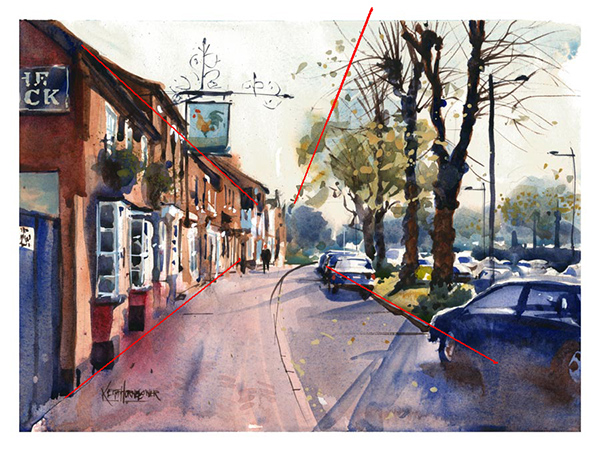
No.7 – Sense of movement. If your subject is people, cars, boats etc. give them space to move into. In the example below, the figures are set to left of centre because they are facing right.
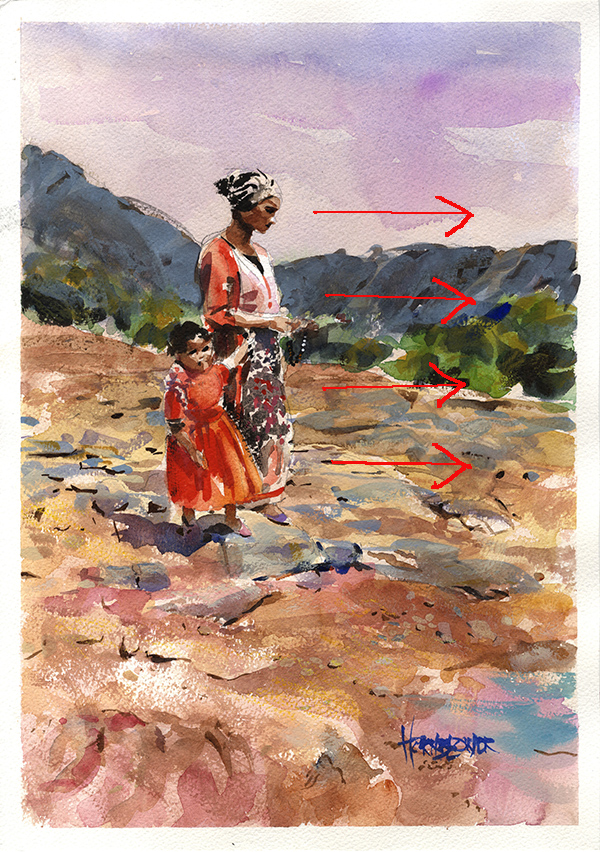
No.8 – The Rule of Odds. Odd numbers tend to work more harmoniously than evens. Don’t ask me why.
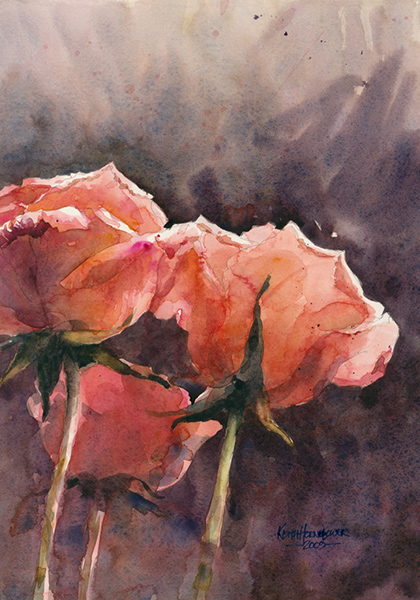
No.9 – Balance. A large object on one side needs to be balanced by something on the other side. That’s all.

No.10 – Framing. I like to have something dark at the edges/ foreground to frame the picture. It helps lead the eye into the scene and also gives a feeling of aerial perspective.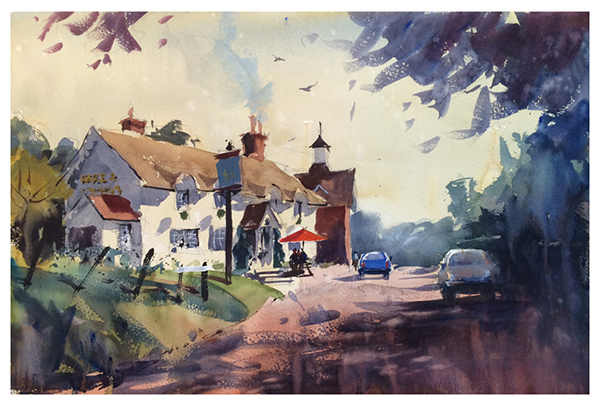
Also look for patterns of texture, shadows, colour etc. and a sense of harmony and rhythm. These come down to your own gut feelings and judgement; in the end, it all does, so if you think it works, do it!
I hope this helps and I’d love to hear your own ideas. Leave me a comment!


